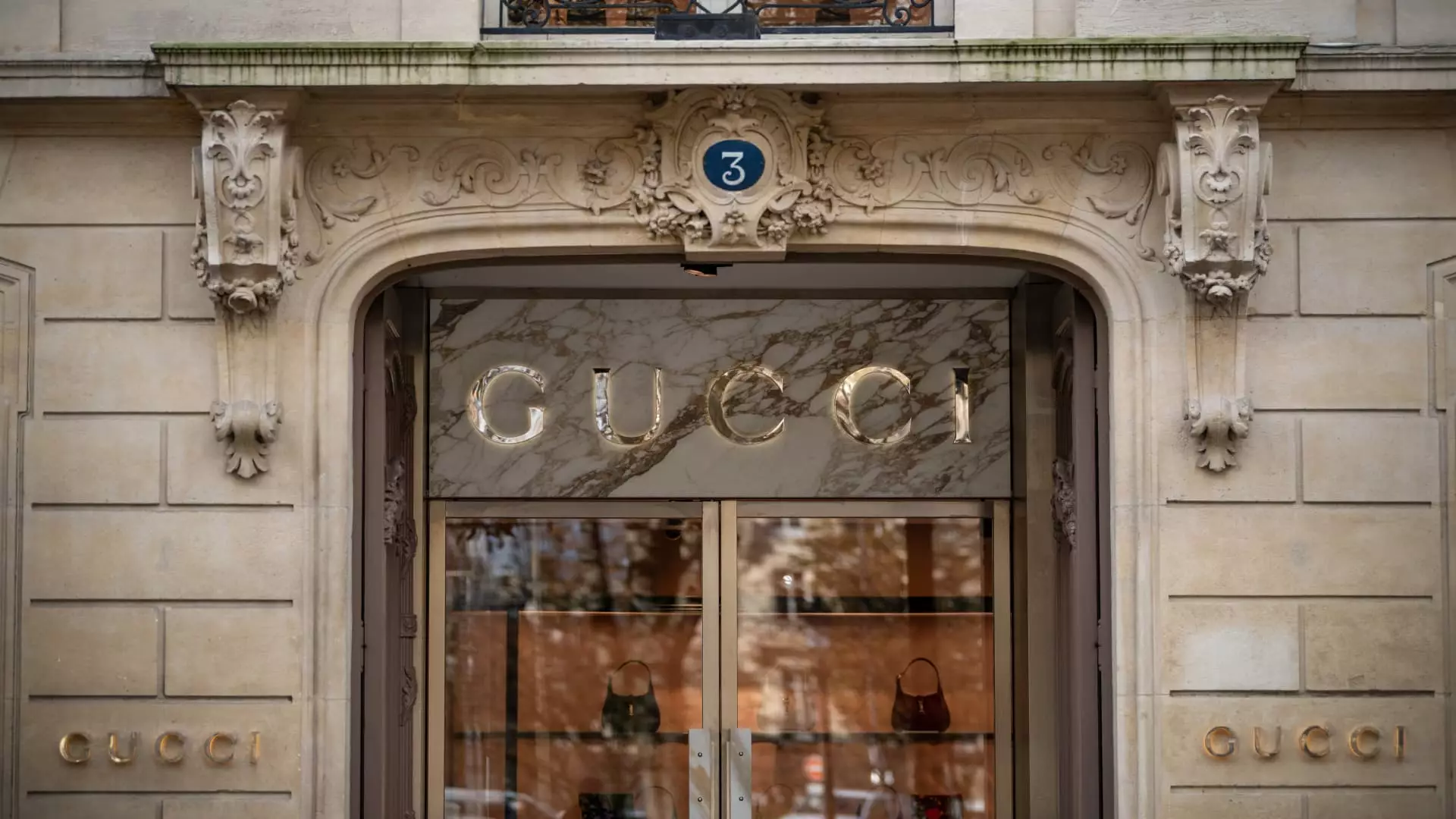Kering, once a titan in the luxury goods market, is grappling with an unsettling reality: it is seemingly out of sync with changing consumer preferences. The staggering 14% decline in first-quarter sales poses critical questions about the brand’s ability to remain relevant in a hyper-competitive industry. With revenues slumping to a mere 3.9 billion euros, the luxury conglomerate isn’t just facing a revenue drop; it’s caught in a storm of shifting consumer behavior. Buyers are now gravitating towards brands that resonate with their values and lifestyles, which has led Kering, particularly its crown jewel Gucci, to showcase its fading allure. While Kering remains committed to revitalizing Gucci with new artistic directions, the brand’s past missteps—vividly brought to light by controversial marketing campaigns—continue to haunt its reputation.
The Asia Factor: A Double-Edged Sword
Asia has long been viewed as the golden goose for luxury retailers, with Chinese consumers often driving impressive sales figures. However, Kering’s recent performance reveals a stark downturn—group sales in the Asian market slipped a shocking 25%. This decline is not merely a seasonal hiccup; it signifies a larger malaise within the luxury segment that is critically dependent on the whims of affluent Asian shoppers. As these consumers tighten their wallets amid economic uncertainties, Kering finds itself ensnared in a web woven by its own fast-fading brand appeal. The company’s over-reliance on a single demographic proves risky, and poses the question: Has Kering neglected to cultivate a more diversified consumer base?
The Impact of Inflation
In an era characterized by soaring inflation, luxury brands like Kering thought they could weather the storm without feeling the pinch. Yet, the economic landscape has played a cruel trick on them, revealing vulnerabilities that were previously masked by booming sales. With inflation diminishing disposable incomes, even the wealthiest consumers are exhibiting a cautious approach toward luxury goods. This shift in consumer sentiment can lead to extended cycles of weak sales—especially for brands like Kering, which have not adequately fortified themselves against price-sensitive trends. Consequently, the very markups that luxury brands are known for may not be as viable as they once seemed.
Leadership Under Fire
François-Henri Pinault, Kering’s Chairman and CEO, expressed determination to overcome current challenges, voicing optimism that the company would emerge stronger. Yet, how credible is this sentiment against a backdrop of declining sales and executive decisions that have yet to yield favorable results? The abrupt appointment of Demna Gvasalia as Gucci’s artistic director has raised eyebrows, casting doubt over Kering’s strategy moving forward. Investors are understandably wary of bringing in a controversial figure to spearhead a revitalization, especially when previous missteps have eroded trust. It raises the question of whether the brand is flailing in a crisis of leadership, prioritizing buzz over substance.
The Comparative Luxury Landscape
As Kering grapples with its own struggles, competitors like LVMH and Richemont are faring relatively better despite overall market challenges. Analysts point out a crucial differential: while Kering’s reliance on Gucci is a double-edged sword, other luxury brands have diversified portfolios that mitigate risks associated with poor performance from a single label. The luxury industry often boasts robust resilience; however, brands that fail to adapt in uncertain times will inevitably fall behind. Kering’s models might require an urgent overhaul to avoid being relegated to irrelevance in a marketplace that rewards adaptability and foresight.
An Uncertain Future Awaits
Strikingly, the digital space represents both an opportunity and a challenge for Kering. While e-commerce has boomed among luxury retailers, Kering’s lack of agility in this arena means that they risk missing out on potential revenue streams. The challenge lies in shifting consumer engagement from mere impulse-driven transactions to fostering deep emotional connections with the brand. As the trends continue to evolve, brands that move beyond transactional relationships and effectively engage consumers socially and ethically will likely thrive. Kering’s future hinges on whether it can recalibrate its strategic intentions and rekindle that connection.
Kering faces an uphill battle, plagued with the complexities of consumer behavior, economic challenges, and leadership changes. The stakes couldn’t be higher, and whether Kering can embrace the transformative changes necessary to stay afloat amid shifting tides remains to be seen. With a strong message that resonates beyond luxury, it must prioritize adaptability and relevant engagement to reclaim its status among the elite in an increasingly fickle market.

